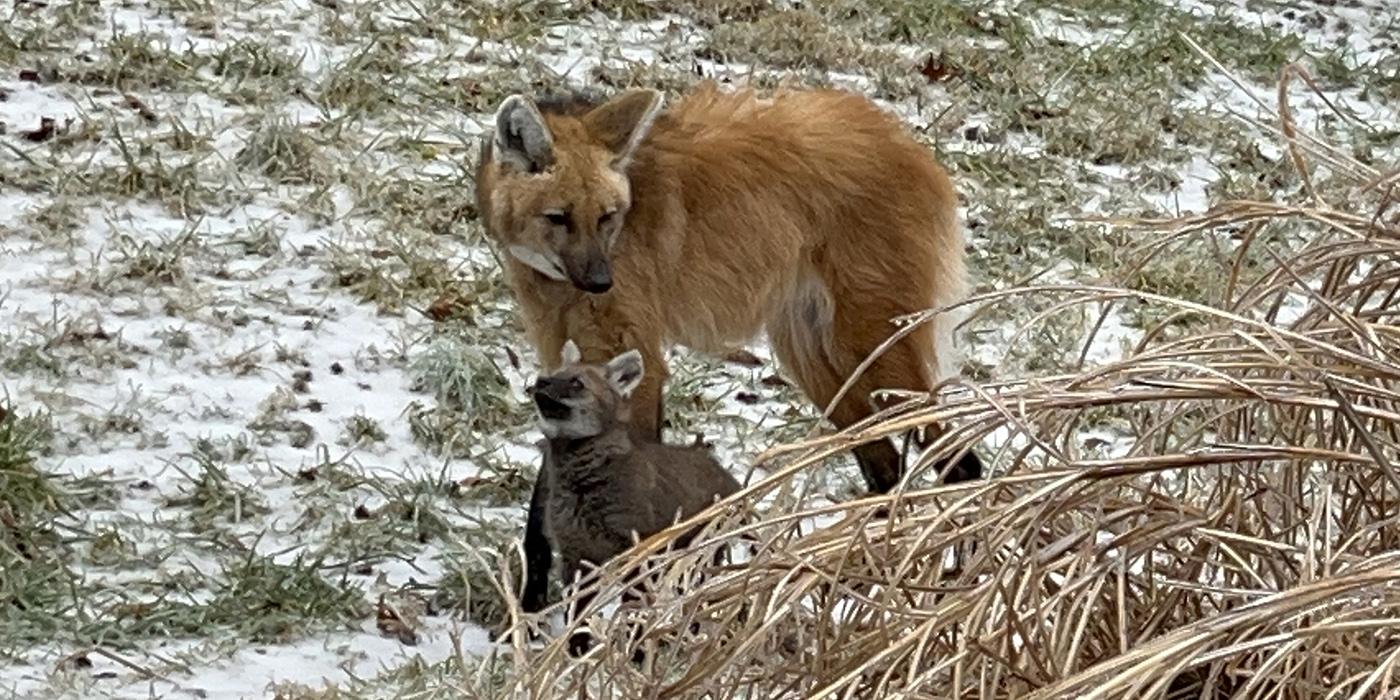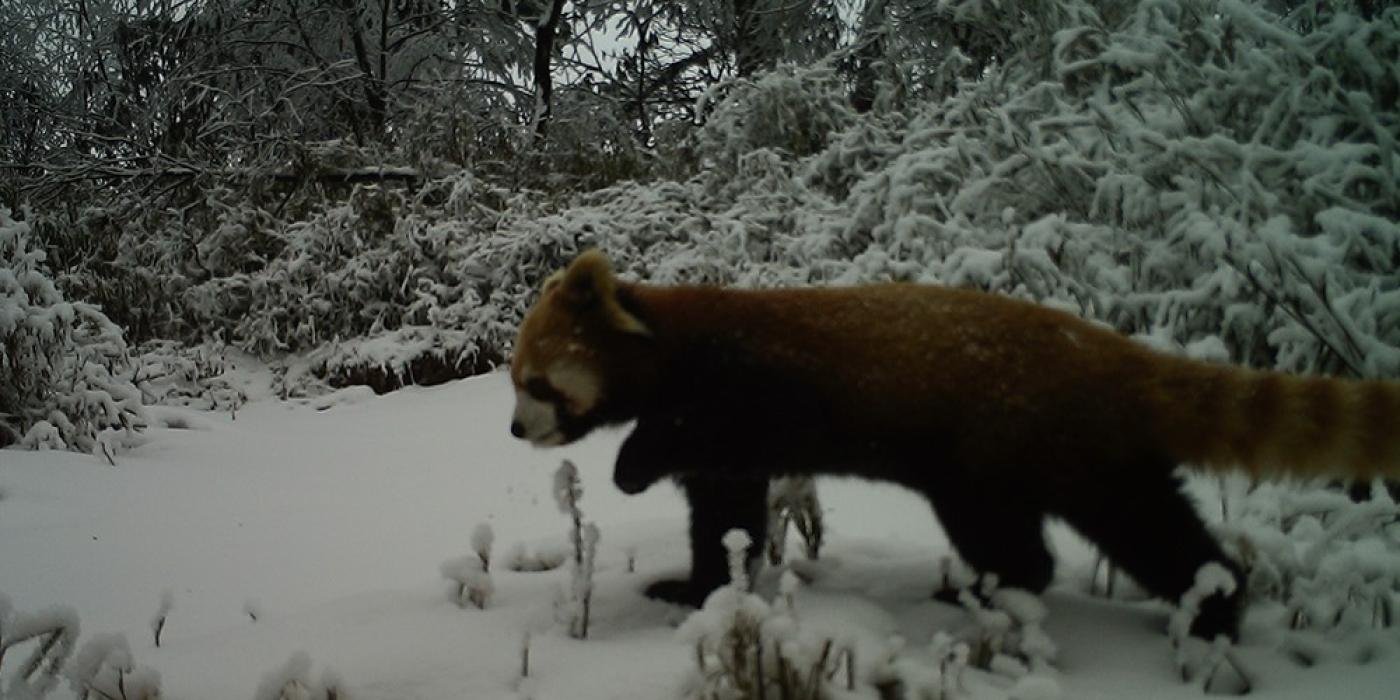Cheetah #Cubdate 2: April 14
Today was a big day for keepers and cheetah cubs alike! For the first time, keepers were able to approach the four cubs born April 8 (and snap their photo). Read on in this Q&A with cheetah biologist Adrienne Crosier to learn how keepers will continue to slowly approach the cubs while mom Echo is out of the den — and why it's important.
As keepers and scientists, how (and how often) are you monitoring Echo and her cubs?
At these early stages, we watch the cubs on the camera during the day. If I am at my desk working, then I have the camera on all the time in the background.
Each morning, we try to review what happened overnight. We don’t watch every minute, but we look for times when Echo left the den, how long she was out and what the cubs did when she was gone.
As the cheetahs continue to grow, what signs do you look for and what do they reveal about the health of the cubs?
The cubs are still less than a week old and should be gaining a significant (for them) amount of weight each day, so we look for regular nursing. Also, we look for peaceful sleeping. If the cubs are not getting enough to eat, then they won’t sleep peacefully. They will be restless and chirping.
We also keep an eye on their eyes, which are just starting to open. You can see it a bit from the camera, but it will look even more obvious over the next few days.
How do you monitor Echo’s health?
Keepers offer her food in the usual spot — either in her small holding yard or in the building. We use the building so she can't see us on days when we want to get into her yard. And we use this as way to make sure she is getting enough to eat and drink. We monitor her food intake by weight and increase her diet once she starts eating consistently every day. There is no use increasing her diet if she is not eating it all every day. We put blood in her diet as well for added hydration. Nursing cubs takes a lot of energy!
We also watch to see if she drinks water when she leaves the den and goes into her small holding yard. There are no cameras there so we can’t be certain, but we assume that she is drinking water when we are not around.
What would you do if you see a cub in distress?
If one cub of the litter is sick or weak, then we would not want to risk the healthy cubs in the litter by disrupting Echo or her den. Right now, because we are not touching the cubs at all yet, that would be very disruptive. It’s all about what mom is used to and will tolerate. Since Echo has never raised cubs before, we don’t know what her tolerance is, so we are going slow. But all of the cubs look good on camera, and we aren’t concerned about any at this time.
When will you try to touch the cubs and why?
We have not touched the cubs at all at this point, and we work up to that slowly. The goal of touching them would be to weigh them and sex them. It ensures that all of them are healthy and growing.
Why are you so careful about handling the cubs?
We don’t want to make Echo nervous by pushing things too quickly and risk her moving the cubs now. The weather is going to be cold this week, so the big risk would be moving them outside. Echo can’t see the weather report to know that it’s going to be cold and rainy tonight. The cubs can’t thermoregulate — keep their body temperature at the proper level — well right now, so it’s too cold for them to be outside. We want her to keep the cubs in the den where they are safe and warm for a little while longer.
What precautions do you take when trying to touch the cubs?
We start this process slowly with first time/new cheetah moms. When Echo leaves the den, we safely lock her away from the yards to allow staff to enter her space. We try to keep her from seeing us go in, which might upset her and make her want to move the cubs.
Yesterday was the first day staff entered Echo's yards. Today, one of our keepers went into the yard while Echo was enjoying one of her favorite foods (a rabbit) in the building nearby. A keeper opened the back den door (the cub door) to observe them — and even snapped some photos!
Our next steps are to actually touch and handle the cubs. We will try this maybe Wednesday or Thursday of this week, depending on Echo. She needs to leave the den on her own and come up to eat on her own. Then, when we can put her in the building with food, a bone, or a treat, we can start the process of picking up cubs. At that point we will figure out if they are male or female, and we will shave a little bit of their fur. Each gets a slightly different pattern, and this will help us know which cub is which.
Related Species:





